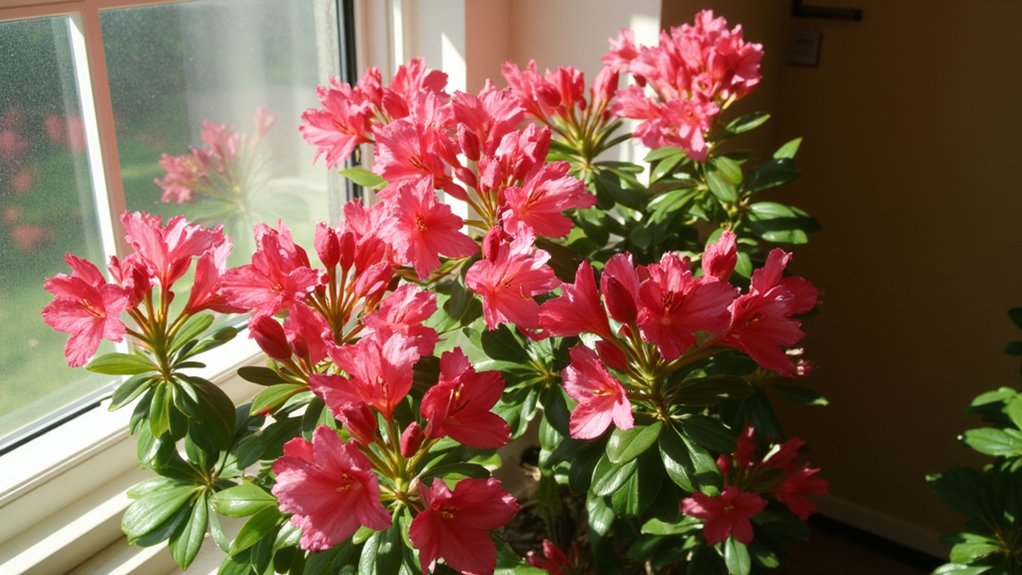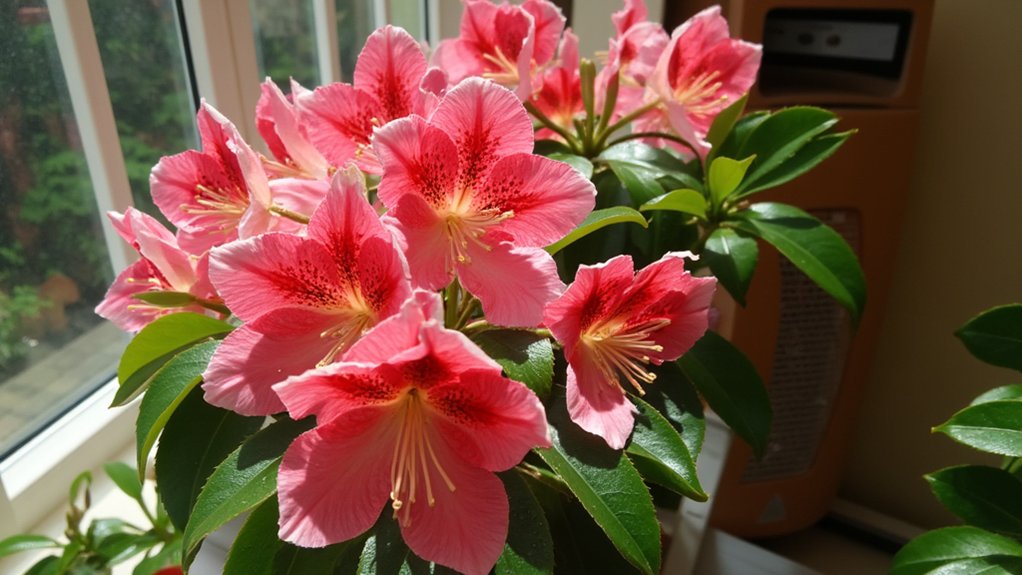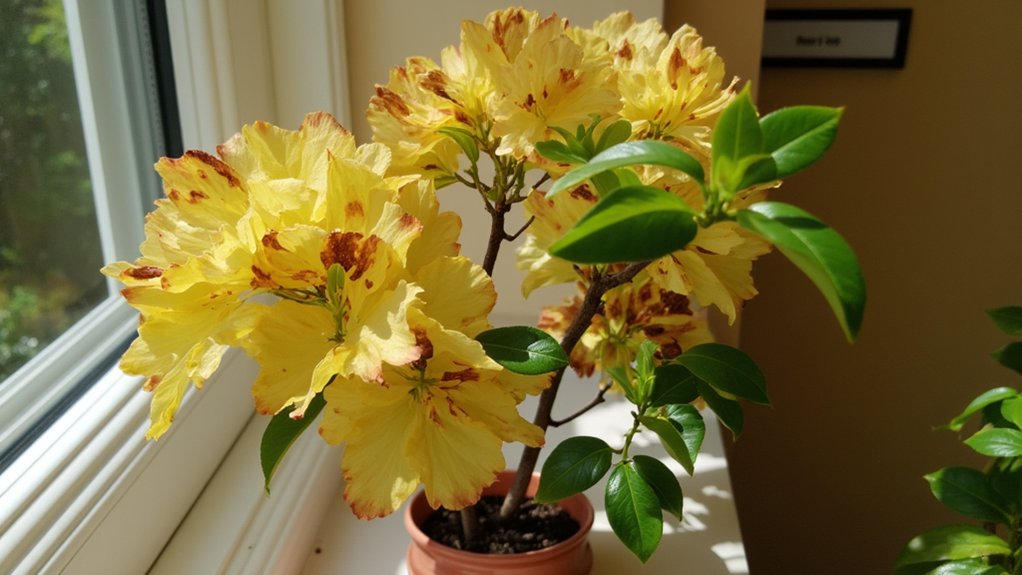You’ll find that growing azaleas indoors isn’t as challenging as it might seem, though these flowering shrubs do require specific care to thrive. While they’re traditionally outdoor plants, you can successfully cultivate azaleas inside your home by meeting their particular needs for light, soil, and humidity. Let’s start with the essential elements that’ll determine whether your indoor azalea becomes a stunning centerpiece or just another houseplant casualty.
Contents
Light and Temperature Requirements

While azaleas are traditionally outdoor plants, they can thrive indoors when given proper lighting and temperature conditions. Place your azalea in a bright location with indirect sunlight, as direct sun can damage the leaves. East or west-facing windows are ideal spots for these flowering beauties.
Keep daytime temperatures between 60-65°F (16-18°C), with a slight drop of 5-10 degrees at night. You’ll need to maintain high humidity levels, which you can achieve by setting your pot on a water-filled pebble tray or using a humidifier nearby. During the flowering period, keep your azalea away from heating vents and cold drafts.
Soil Selection and Watering Guidelines
Creating the right environment for your indoor azalea starts with proper soil and watering practices. You’ll need acidic soil with a pH between 4.5-6.0, and it’s best to use a potting mix specifically designed for acid-loving plants. Mix in 50% peat moss to improve drainage and maintain proper acidity.
For watering, check your azalea’s soil moisture daily by inserting your finger about an inch deep. When the top layer feels slightly dry, water thoroughly until it drains from the bottom holes. Don’t let the soil become waterlogged, but don’t allow it to dry out completely either. During flowering, you’ll need to water more frequently.
Humidity and Air Circulation

Because indoor azaleas originate from humid forest environments, they’ll need moisture levels between 40-50% to thrive in your home. You can maintain proper humidity by placing a humidity tray filled with pebbles and water beneath your plant, or by running a humidifier nearby for 4-6 hours daily.
Ensure good air circulation around your azalea by keeping it at least 12 inches away from walls and other plants. Place your plant near an east-facing window where it’ll receive filtered light and gentle air movement, but avoid positioning it in drafty areas or directly in front of heating vents, which can dry out the foliage.
Pruning and Maintenance Tips
Proper pruning is essential for keeping your indoor azalea healthy and compact. You’ll want to trim your plant right after it finishes blooming, removing spent flowers and any dead or crossing branches with clean, sharp pruning shears.
Shape your azalea by cutting back long, leggy stems by up to one-third their length, making cuts just above a leaf node. Don’t forget to pinch back new growth during the growing season to encourage bushiness.
For maintenance, remove yellow leaves as they appear, and inspect the plant monthly for signs of pests or disease. You can also lightly prune throughout the year to maintain its desired shape.
Common Problems and Solutions

While indoor azaleas are generally hardy plants, they can encounter several common issues that’ll need your attention. Yellowing leaves often indicate improper pH levels, so test your soil and adjust to 4.5-6.0 using an acidic fertilizer. If you notice leaf drop, you’re likely dealing with insufficient humidity or improper watering.
Spider mites and aphids can infest your azalea, appearing as tiny specks on leaves. Combat these pests by spraying with neem oil solution every 7-10 days. Brown, crispy leaf edges typically signal sunburn, so move your plant away from direct sunlight to a spot with bright, filtered light.
